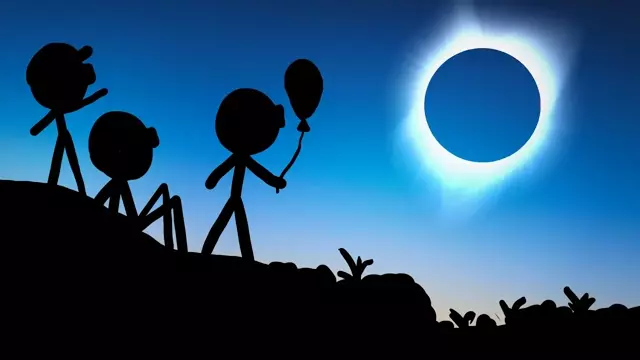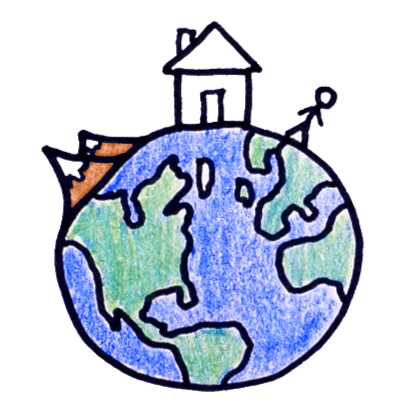2023-09-22
[public] 53.3K views, 8.80K likes, dislikes audio only
This Product is supported by the NASA Heliophysics Education Activation Team (NASA HEAT), part of NASA’s Science Activation portfolio.
The material contained in this document is based upon work supported by a National Aeronautics And Space Administration (NASA) grant or cooperative agreement. Any questions, findings, conclusions or recommendations expressed in this materials are those of the author and do not necessarily reflect the views of NASA.
Without eclipses, our world would be a lot different because eclipses give us the ability to do science we otherwise wouldn’t be able to.
LEARN MORE
**************
To learn more about this topic, start your googling with these keywords:
- Corona: the outermost part of the Sun's atmosphere.
- General Relativity: a theory of gravitation developed by Albert Einstein that says that the observed gravitational effect between masses results from their warping of spacetime.
- Lunar Eclipse: an eclipse in which the moon appears darkened as it passes into the earth's shadow.
- Solar Eclipse : an eclipse in which the sun is obscured by the moon.
- Tidal Friction: strain produced in a celestial body (such as the Earth or Moon) that undergoes cyclic variations in gravitational attraction as it orbits, or is orbited by, a second body.
CREDITS
*********
Cameron Duke | Script Writer, Narrator and Director
Sarah Berman | Illustration, Video Editing and Animation
Nathaniel Schroeder | Music
MinuteEarth is produced by Neptune Studios LLC
OTHER CREDITS
*****************
Photo of 1919 Total Solar Eclipse
Credit: ESO/Landessternwarte Heidelberg-Königstuhl/F. W. Dyson, A. S. Eddington, & C. Davidson
https://www.eso.org/public/images/potw1926a/
OUR STAFF
************
Lizah van der Aart • Sarah Berman • Cameron Duke
Arcadi Garcia i Rius • David Goldenberg • Melissa Hayes
Alex Reich • Henry Reich • Peter Reich
Ever Salazar • Leonardo Souza • Kate Yoshida
OUR LINKS
************
Youtube | https://youtube.com/MinuteEarth
TikTok | https://tiktok.com/@minuteearth
Twitter | https://twitter.com/MinuteEarth
Instagram | https://instagram.com/minute_earth
Facebook | https://facebook.com/Minuteearth
Website | https://minuteearth.com
Apple Podcasts| https://podcasts.apple.com/us/podcast/minuteearth/id649211176
REFERENCES
**************
Espenak, Fred. “NASA - Eclipses and the Saros.” eclipse.gsfc.nasa.gov/SEsaros/SEsaros.html
Guglielmi, Giorgia. “Three Times Scientists Learned Something from Solar Eclipses—and Three Times They Were Tricked.” www.science.org/content/article/three-times-scientists-learned-something-solar-eclipses-and-three-times-they-were
Interrante, Abbey. “NASA Selects 5 Experiments to Study 2024 Total Solar Eclipse.” NASA, 20 June 2023, www.nasa.gov/feature/goddard/2023/sun/science-in-the-shadows-nasa-selects-5-experiments-for-2024-total-solar-eclipse
Littmann, Mark, and Fred Espenak. Totality : The Great American Eclipses of 2017 and 2024. Oxford, United Kingdom, Oxford University Press, 2017
Perkins, Sid. “Ancient Eclipses Show Earth’s Rotation Is Slowing.” www.science.org/content/article/ancient-eclipses-show-earth-s-rotation-slowing
Redd, Nola Taylor. “Here’s What Scientists Have Learned from Total Solar Eclipses.” www.space.com/36785-solar-eclipse-science-throughout-history.html
Steel, Duncan. Eclipse : The Celestial Phenomenon That Changed the Course of History. London, Headline Book Pub, 1999.
Stephenson, F. R., et al. “Measurement of the Earth’s Rotation: 720 BC to AD 2015.” Proceedings of the Royal Society A: Mathematical, Physical and Engineering Sciences, vol. 472, no. 2196, Dec. 2016, p. 20160404, https://doi.org/10.1098/rspa.2016.0404
https://patreon.com/minuteearth
/youtube/video/kl0VmU4-3AQ

